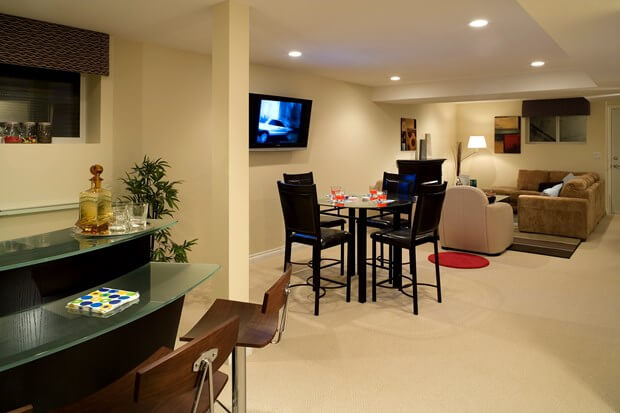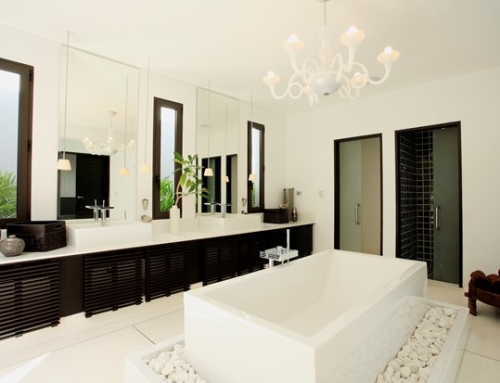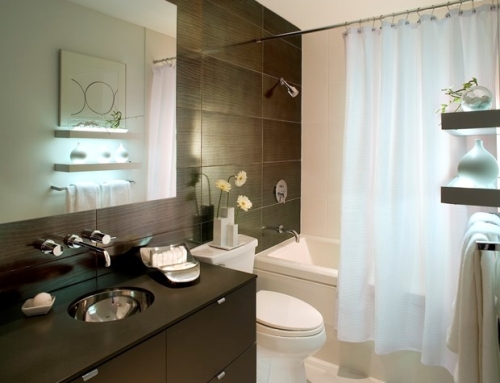
The most popular project homeowners put off is basement finishing. After all, finishing a basement is rarely fast or easy and as such, many of you choose to invest your money elsewhere in the house, such as the kitchen or bathroom.
If your home allows for it, a finished basement is the easiest way to add usable square footage. It not only gives you more space to lounge or your kids more room to play, but more space to host family during the holidays.
Nevertheless, every project comes with a price. Therefore, I decided to put together the major basement finishing projects and costs that come with every basement renovation.
Basement Remodeling
When it comes to basement finishing, there are many steps that need to be done. First and foremost, professional framing has to take place. Then, you can add walls, flooring and windows. During the process, make sure your basement pro installs waterproof walls and enough insulation to keep everyone warm in the winter and cool in the summer.
According to our basement remodeling cost estimator, the average price to remodel a basement is $16,733. Needless to say, this price can fluctuate quite a bit. We have seen basement renovations go as high as $35,000 and as low as $1,000.
Basement Framing
Like I said earlier, framing is the first step in all basement finishes. Most basements will already be framed, but if not, the cost does add to the total. Framing an unfinished basement can be very expensive due to both the labor and lumber costs.
Surprising to many, the cost of lumber can actually end up being the most expensive part of the project. One way to offset those costs is by using metal studs. They are lighter and easier to work with, cutting down on both material and labor costs dramatically.
Additionally, only buying lumber you will actually use is another way to save money on framing. Check out our lumber calculator to ensure you don’t overpay.
Basement Wall Installation
Despite everyone loving the open concept nowadays, the basement is typically a place to house multiple rooms, including those guest bedrooms I referred to earlier. According to our wall installation cost estimator, the average price to install a wall is $1,995. However, you can save money by installing a pony wall (half walls).
If you decide to go with a pony wall, you may be able to handle the project yourself (saving money). However, if you’re going to expand your house and need to install weight-bearing walls, you’re better off leaving it to the pros. Additionally, you or your pro will need to investigate building codes and local requirements to ensure you comply with structural guidelines.
When putting a wall over a recently constructed frame, sheetrock is the industry standard for a paintable and more durable option. It can help insulate the room and generally lasts a long time when maintained. If you are trying to significantly drive costs down, go with paneling. It is very light, inexpensive and pre-finished in a variety of different sizes and types. Labor costs may also decrease because paneling is easier to transport and work with.
Waterproofing
Along with installing basement walls, you or your pro will have to ensure that all walls are waterproof. Flooding is sadly a common issue in certain areas of the country, so making sure your basement is completely waterproof becomes vital.
Most waterproofing tactics come during construction, but over time, one must ensure that leaks are not a possibility. To ensure all was done right, or if you’re taking on the project yourself, please see our DIY Tips for How to Waterproof Basement Walls.
If you do think you need extra waterproofing assistance, a waterproof inspection wouldn’t hurt. A few telltale signs are pools of water around the edge of your home long after the latest rain or cracked, sagging or discolored basement walls.
Basement Flooring
When it comes to basement remodeling, no aspect stands out more than your flooring. It’s what guests immediately notice, both from a sense and sight perspective.
Fortunately enough, like all flooring projects, you have a wide array of options to choose from with each offering its own set of advantages and disadvantages.
Carpet use to be the gold standard for basement flooring. Its soft and homey texture blended perfectly in basement remodels across the country. Furthermore, according to our flooring cost estimator, carpet is cheaper than both tile and hardwood flooring. However, carpet has lost recognition over the years and when it comes to flooding, no flooring option is more expensive to fix than carpet.
Another popular solution to flooring in the basement is tile. Although tile is definitely a more expensive option in both material and labor costs, tile presents a unique design feature to any basement. Beware, unless you have terrific heating, those tile floors may be cold come winter.
Finally, one of the most popular flooring options in the home is hardwood. While it is expensive, $4,840 for 500 square feet, hardwood is the most long-lasting and durable option out there. There are many different types of hardwood to choose from, ensuring that the right type of hardwood flooring can fit into any basement remodeling budget.
Basement Insulation
Every aspect of this article is about creating a comfortable and inviting environment in your basement. Well, everything goes out the window if you don’t install proper basement insulation.
Heat naturally rises and on top of that, older homes with historic insulation standards and poor windows lead to uncomfortable settings. Proper basement insulation will not only solve these issues, but also lower your energy bills.
There are plenty of places to install basement insulation. Since heat rises, you should add insulation to both the walls and the ceiling. Nonetheless, if given the option, manybasement insulation pros prefer wall insulation because:
- Wall insulation will save you more on energy costs.
- Ceiling insulation is harder to install.
- There are ducts, ventilation and other units in the ceiling that can help insulate your basement ceiling without professional insulation.
- Wall insulation separates your basement from the outside temperature, which tends to much higher or lower than a desired temperature in a home (the difference between your basement and first floor is not as high).
If you have to pick one, go with wall insulation when insulating your basement.
Adding Egress Windows
Finally, if you do install a new bedroom in your finished basement, you will need to install a window as well. All basement bedrooms need a window for emergency escape purposes.
If you are adding a bedroom to your current bedroom, you can cut a large opening in a basement wall and add a window that meets your code. If you don’t’ want to do this yourself, basement pros can complete the job for approximately $2,000. Nonetheless, if you want to save some money, see our DIY Tips For How To Install A Basement Egress Window.
Conclusion
Finishing a basement is like installing a brand new addition to your home. Finished basements give you the luxury of hosting holiday weekends, more room for your kids to play or a quiet getaway for you and your significant other. Knowing all the costs, you can determine if a finished basement is right for you.















Get Social